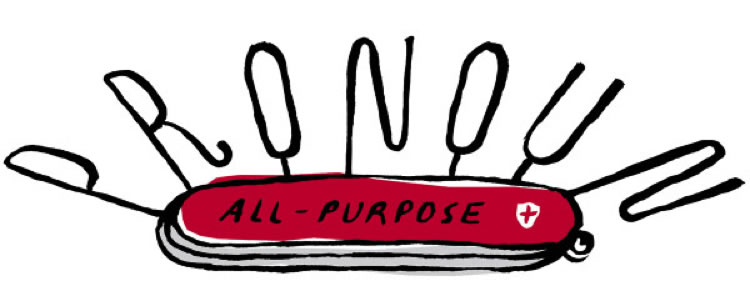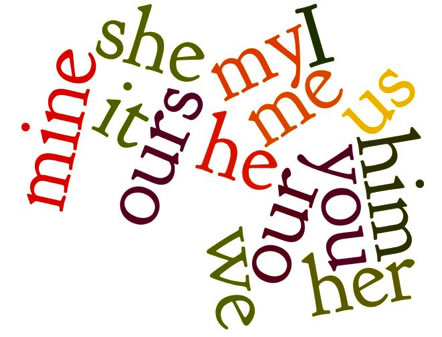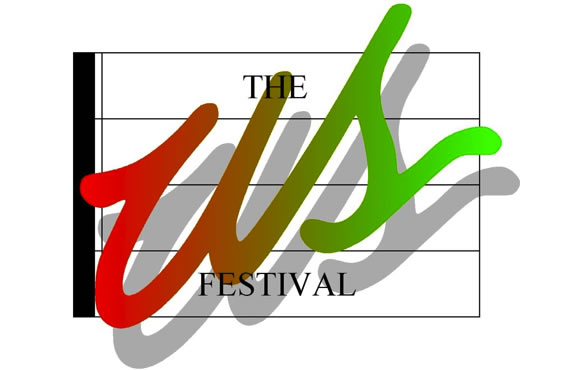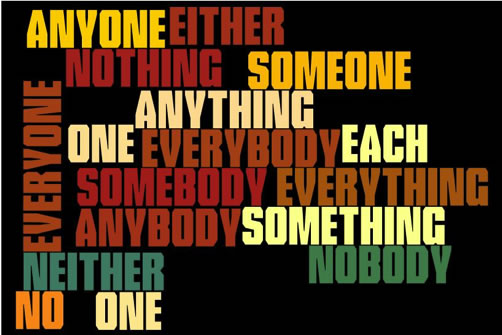Types of Pronouns

Source: All-Purpose Pronoun, Peter J. Ahlberg, New York Times
Before you can edit for reference and agreement, you must be able to recognize pronouns. I know the rules about pronouns look like a ton of information, but don’t panic.
This basic review is meant to help you, not make you nervous. Just familiarize yourself with the types of pronouns and look at the examples so that you will feel better prepared for the sections that follow.
Personal and possessive pronouns
A personal pronoun refers to a specific person or thing and can be singular or plural. A possessive pronoun indicates possession or ownership, takes the place of the possessive form of a noun, and can also be singular or plural.

Source: Word jumble, IPSI
|
Personal Pronouns
|
Possessive Pronouns
|
|||
|---|---|---|---|---|
|
Singular
|
Plural
|
Singular
|
Plural
|
|
| First person | I, me | we, us | my, mine | our, ours |
| Second person | you | you | your, yours | your, yours |
| Third person | he, him, she, her, it | they, them | his, her, hers, its | their, theirs |
You are probably fairly confident about using these particular pronouns. Be sure to notice, however, that possessive pronouns do not have apostrophes like possessive nouns do. And yes, the rule applies to all possessive pronouns, even the possessive word its, as shown in these examples:
- Its corner instead of the box’s corner
- Its stars instead of the sky’s stars
Remember: Possessive pronouns do not use apostrophes.
Notice, too, that some possessive pronouns must be used before nouns (for example, my book, your car, his ear, our hats), but others can stand alone (for example, the CD is mine; Greta lost hers; theirs is on the way).

Source: US Festival Logo, Crosby Productions
Reflexive and intensive pronouns
Reflexive pronouns and intensive pronouns are easy to recognize because they are distinctive and identical in form: -self or -selves is added to certain, but not all, personal and possessive pronouns. Both of these pronoun types can be singular or plural.
|
Reflexive and Intensive Pronouns
|
||
|---|---|---|
|
Singular
|
Plural
|
|
| First person | myself | ourselves |
| Second person | yourself | yourselves |
| Third person | himself, herself, itself | themselves |
Hisself and theirselves are not words.
Reflexive pronouns are generally used in two situations:
1. When the subject and object receiving the action of the verb are the same person or thing.
- I promised myself to study more.
- Speeding drivers endanger themselves and others.
2. As the object of a preposition, when the subject and the object are the same person or thing.
- Larry made a kite for himself.
- We ate dinner by ourselves.
An intensive pronoun emphasizes the noun or pronoun antecedent that comes before it.
- Teresa herself painted the wall.
- They made the cake themselves.
Notice that all the third-person singular pronouns above (personal, possessive, reflexive, and intensive) express gender. He, him, his, and himself are masculine; she, her, hers, and herself are feminine; it, its, and itself are neuter (neither masculine nor feminine.)
Demonstrative pronouns
Demonstrative pronouns point out specific persons, places, things, or ideas.
|
Demonstrative Pronouns
|
|
|---|---|
| Singular | this, that |
| Plural | these, those |
| Singular or plural | such |
- This is the iPod I want. That is the ugliest shirt in the world. (singular) Did you notice that the pronoun this seems closer in space or time than that?
- These were left here last night. My shoes were better than those. (plural) Did you notice that the pronoun these seems closer in space or time than those?
- Such is life. (singular) Such were my dreams. (plural)
Be aware that the five words that act as demonstrative pronouns can also act as adjectives. Compare the example sentences above, in which the words are used as pronouns, to the example sentences below, in which the same words are used as adjectives.
- I don’t like this pizza. That movie was hilarious. (singular)
- These grammar books weigh about 10 pounds each. Are you serious about buying those tickets? (plural)
- Such laughter is refreshing. (singular)
- He had such plans for the future. (plural)
Interrogative pronouns
Interrogative pronouns are used to form questions. Here are some examples:
- Who is the leader?
- Whom will Gene ask?
- Whose mess is this?
- What are you doing?
- Which fish did she catch?
Relative pronouns
A relative pronoun is used to begin a subordinate clause and relates the clause to a noun or other pronoun in the main (or independent) clause.
The list of relative pronouns includes the five words that can also be interrogative pronouns (who, whom, whose, what, which) and five more (that, whoever, whomever, whichever, whatever). Even though some of these pronouns are in two categories, the example sentences show how the pronouns are used differently.
- The party, which lasted all night, was very noisy. (which begins the subordinate clause which lasted all night)
- The man who opened the door is my grandfather. (who begins the subordinate clause who opened the door)
Indefinite pronouns
Problems can arise when working with indefinite pronouns because determining their number is sometimes difficult. However, you must know if they are singular or plural in order to edit for pronoun reference and agreement. Hopefully the following information will help you to make those determinations.

Source: Letters, IPSI
Most indefinite pronouns are singular, even though every- and some- would seem to indicate more than one. Think about this: one, body, and thing are all singular, right? That’s the clue as to why the pronouns in the first three rows of the table below are singular. You will have to commit others to memory.
| One words | one | anyone | everyone | someone | no one |
|---|---|---|---|---|---|
| Body words | anybody | everybody | somebody | nobody | |
| Thing words | anything | everything | something | nothing | |
| Others | each | either | neither |
A few indefinite pronouns—including both, few, many, and several—are plural.
Some indefinite pronouns (including all, any, more, most, none, and some) can be singular or plural, depending on whether the word they refer to is singular or plural.
It is necessary for you to know whether a pronoun is singular or plural in order to have it agree with its antecedent, so do some preliminary practice by dragging and dropping each pronoun into the “singular,” “plural,” or "singular or plural" box below.